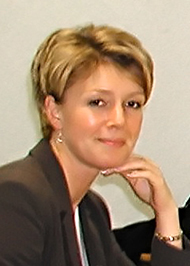Nicola J. Brown, Ph.D.
Research Interests
Professor of Microcirculation Biology, Head of Academic Surgical Oncology Unit, Head of Microcirculation Research Group, Department of Oncology, Faculty of Medicine Dentistry and Health
Research Description
The principal objective and research strategy of the Research Group is to investigate the mechanisms regulating tumour angiogenesis in preinvasive to invasive cancer progression and how this may be targeted for therapy. The facility contains state-of-the-art specialised fluorescent in vivo microscopy and multiphoton microscopy which allows real-time imaging of blood vessel development, blood flow, leucocyte-endothelial and tumour-endothelial interactions, in a variety of preclinical in vivo models, in addition to a panel of in vitro angiogenesis assays. Clinical study of human tissue, both normal and breast cancer are complemented by laboratory based modeling, both basic and applied.
Angiogenesis or new blood vessel formation is a prerequisite in the growth and development of primary and secondary tumours. This process comprises a multifactorial cascade of events involving degradation of components of the extracellular matrix, followed by the migration, proliferation and differentiation of endothelial cells to form tubules and eventually new vessels. Angiogenesis is regulated by a balance of endogenous angiogenesis stimulators (such as vascular endothelial growth factor (VEGF) and basic fibroblast growth factor (bFGF) and the angiopoietin/TIE family,) and inhibitors (such as angiostatin, endostatin and thrombospondin) in addition to proteolytic enzymes (eg matrix metalloproteinases) and their natural inhibitors, (tissue inhibitors of metalloproteinases (TIMPs)) and the local production of cytokines, produced by a number of specific cell types.
Physiological angiogenesis in wound healing and pathophysiological angiogenesis in tumours are compared in parallel studies to identify differences in the mechanisms controlling the angiogenic process. These are performed using in vitro cell and molecular biology and in vivo microscopy techniques in combination with real-time imaging. Studies include identification of the pattern and morphology of vessels, during initiation, maturation and vascular remodeling; evaluation of the mechanisms and regulatory factors (enzymes, cytokines, growth factors) involved in angiogenesis at all stages of the process; whether abnormalities which may exist in the genetic machinery controlling vessel formation, render certain individuals more susceptible to disease. In addition the research programme evaluates how specific cancer therapies that target the vasculature, may inhibit angiogenesis, thereby preventing tumour progression and limiting metastasis.
Then research programme can be broadly divided into two main areas: -
- Angiogenesis in tumour biology and novel therapeutic strategies
- Angiogenesis and the microcirculation in benign disease
Professional Background
University of Sheffield: October 1980 - July 1983.
Bachelor of Science, Second Class Dual Honours Physiology & Pharmacology
University of Sheffield: October 1983 - December 1986.
Doctor of Philosophy: The regulation of gastrointestinal transit in the rat.
Research Assistant funded by Medical Research Council project grant.
Selected Publications
Brown NJ and Reeves KJ. Angiogenesis, hypoxia and bone metastasis. Invited book chapter Bone Cancer: Progression and Therapeutic Approaches Second Edition 2013
Brown NJ, Higham SE, Perunovic B, Arafa M, Balasubramanian S, Rehman I. (2013) Lactate Dehydrogenase-B is silenced by promoter methylation in high frequency of human breast cancers. PLoS One 8: e57697.
Chen Y-Y, Brown NJ, Jones R, Lewis CE, Mujamanni AH, Muthana M, Seed MP, Barker MD (2013) A peptide derived from TIMP-3 inhibits multiple angiogenic growth factor receptors and tumour growth and inflammatory arthritis in mice. Angiogenesis, 23 Sept 13, Epub ahead of print.
Brookes ZL, Stedman EN, Brown NJ, Hebbes CP, Guerrini R, Calo G, Reilly CS, Lambert DG (2013). The Nociceptin/Orphanin FQ Receptor Antagonist UFP-101 Reduces Microvascular Inflammation to Lipopolysaccharide In Vivo. PLoS One Sep 23; 8(9): e74943
Staton CA, Koay I, Wu JM, Hoh L, Reed MW, Brown NJ (2013) Neuropilin-1 and neuropilin-2 expression in the adenoma-carinoma sequence of colorectal cancer. Histopathology 62: 908-91
5Reeves KJ, Hou J, Higham SE, Sun Z, Trzeciakowsi JP, Meininger GA, Brown NJ. (2013) Selective measurement and manipulation of adhesion forces between cancer cells and bone marrow endothelial cells using Atomic Force Microscopy (AFM). Nanomedicine (London) 8:921-934.
Alfieri A, Watson JJ, Kammerer RA, Tasab M, Progias P, Reeves K, Brown NJ and Brookes ZL (2012) Angiopoietin-1 variant reduces LPS-induced microvascular dysfunction in a murine model of sepsis. Critical Care.Oct 4 16: R182; Epub ahead of print
Lawton BK, Brown NJ, Reilly CS, Brookes ZL (2012) Role of L-type calcium channels in altered microvascular responses to propofol in hypertension. Br J Anaesth, 108(6): 929-35.
Young RJ, Tin AW, Brown NJ, Jitlal M, Lee SM, Woll PJ (2012) Analysis of circulating angiogenic biomarkers from patients in two phase III trials in lung cancer of chemotherapy alone and thalidomide. British Journal of Cancer, 13: 1153-59.
Reeves KJ, Brookes ZLS, Reed MWR, Brown NJ (2012) Evaluation of fluorescent plasma markers for in vivo microscopy of the microcirculation. Journal of Vascular Research, 49: 132-143.
Ottewell PD, Brown HK, Jones M, Rogers TL, Cross SS, Brown NJ, Coleman RE, Holen I (2012) Combination therapy inhibits development and progression of mammary tumours in immunocompetent mice. Breast Cancer Research and Treatment 133: 523-536




